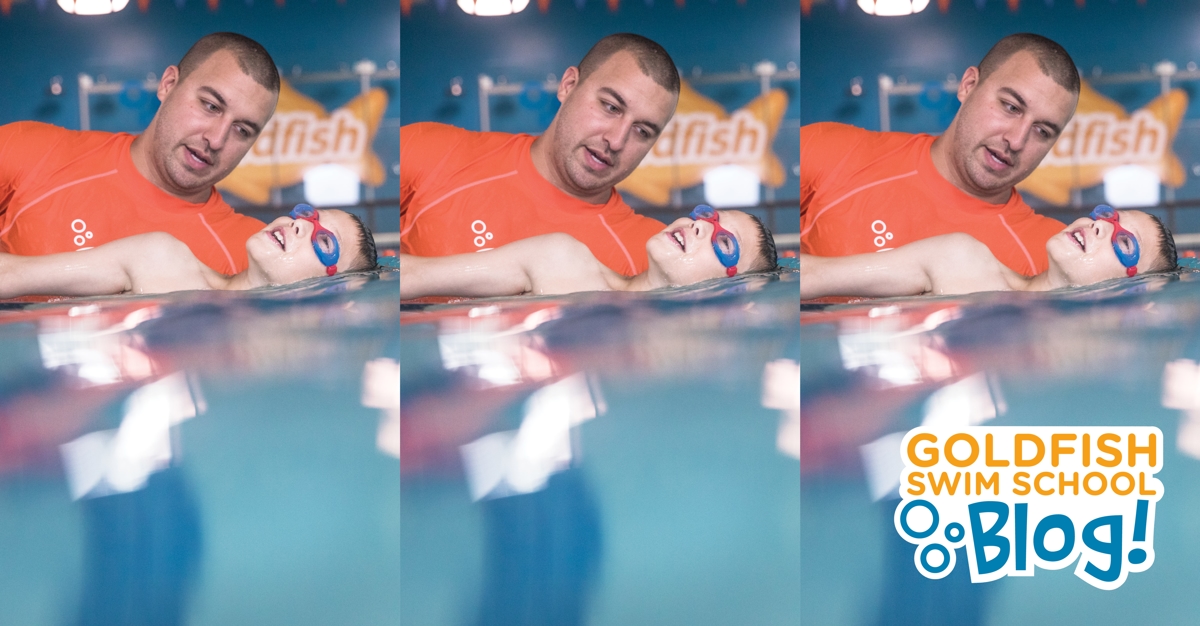Over and over and over: Why repetition is so important in swim lessons

As a parent, you probably have a certain book or movie memorized because your little guppies like to watch or read it over and over (and over and over) again, right? Repetition is something that doesnt seem to bother children the way it bothers adults, right?
As grownups, we dont have as much tolerance for repetition as children. We like things to be fresh and new all the time. But kids find comfort in the familiar and their brains are developing, so watching, reading or doing the same thing time and again helps them master it.
Think about it: You can probably throw or kick a ball with no problem but for little kids, those mastery skills come from practicing time and again.
So, while you are sitting on the sidelines watching your little fish swim, you might notice that they do the same things repeatedly. You might even wonder why. Theres a method to this and as swim professionals, the Goldfish Swim School Team believes that repetition is the key to swimming success and mastery.
Goldfish Swim School Founder Jenny McCuiston said to become a competent and secure swimmer, children need to practice the same skills over and over again. Its called muscle memory and McCuiston said it can save a life.
We want these skills to be habits for them, she said. We want it to be an instinct, so if they fall in the water, they know how to safely get out and not panic.
She said thats why in every lesson, Goldfish instructors use integrity, compassion and trust to teach kids how to be safer in and around the water.
In swim lessons, as in life, doing something one or two times isnt enough practice to make it a habit.
We do things over and over again so we dont forget, McCuiston said. It helps us retain the information and the skill. This is especially important with children.
And as children progress through the levels at Goldfish, they practice the same kind of skills, like pulling, kicking and turning with some variances. That progression helps with learning too, because children recognize the skill and are OK with being challenged because its familiar. It also ensures a golden experience each and every time.
You can even practice these skills at home or at our open swim times!
It might look boring to a parent sitting behind the glass, but it lets the kids know what to expect, said McCuiston. It helps it be less scary or unknown. We find theres less fear in trying something new, since they always kind of know what to expect.
Also, at play at Goldfish Swim School is, well, PLAY! The Science of SwimPlay® lets kids learn valuable skills under the guise of playing, meaning they are more apt to retain a skill. Your child might think she is diving for rings, but shes also learning breath control, McCuiston said. Thats something to celebrate!
Theres a method behind it for sure, she said.
When Goldfish Swim School revamped its curriculum earlier this year, one of the things they focused on was how to strip lessons down to the basics and build the repetition into each lesson, so swimmers can build seamlessly on their skills. Kicking, gliding, pulling: Each of those skills is taught at each lesson, at each level expanded on as kids advance.
This allows us to focus on the main skills, teaching water safety and proper swim technique, McCuiston said.
So, while you see your child doing something again and again, you can rest assured that hes practicing something that will stay with him for life. These are the extraordinary results we strive for every day.
We know it works, she said.
Goldfish Swim School
Come and check out our WOW Customer Service for yourself. Babies as young as 4 months old can start learning how to swim at one of our dozens of locations across the United States. Theres sure to be one close to you, so look us up! Wed love to meet you.


